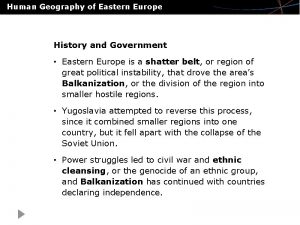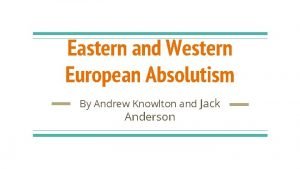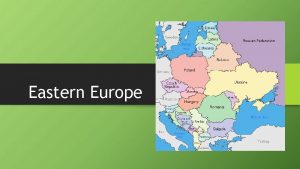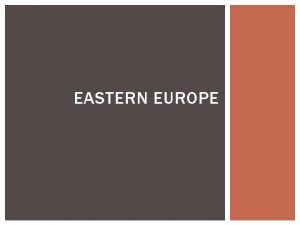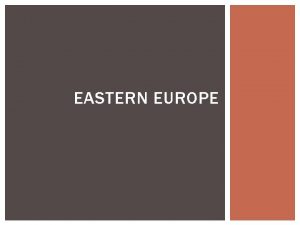Human Geography of Eastern Europe History and Government




- Slides: 4

Human Geography of Eastern Europe History and Government • Eastern Europe is a shatter belt, or region of great political instability, that drove the area’s Balkanization, or the division of the region into smaller hostile regions. • Yugoslavia attempted to reverse this process, since it combined smaller regions into one country, but it fell apart with the collapse of the Soviet Union. • Power struggles led to civil war and ethnic cleansing, or the genocide of an ethnic group, and Balkanization has continued with countries declaring independence.

Human Geography of Eastern Europe Population Patterns • The Slavs are an ethnic group that includes Serbs, Croats, Slovenes, and Macedonians. • The Roma are of Indo-European origin and are the largest minority population in Europe. • The majority of people live in urban areas, although there are large populations along the Danube and Vistula Rivers. • Eastern Europe experienced large migrations during and after World War II with people leaving to escape war and poor conditions.

Human Geography of Eastern Europe Society and Culture Today • Countries have faced economic challenges in the transition to democratic governments. • The area is marked by many different religious and ethnic groups. • The family is the basic social unit and serves to reinforce social values. • The long history of folk and classical music makes it an important art form among peoples of the region.

Human Geography of Eastern Europe Economic Activities • Over the past 20 years, Eastern Europe has transitioned to a market economy. • The region is known for low-cost, high quality electronic and automotive manufacturing, but still maintains its agricultural roots. • As political stability has improved, the region has become increasingly linked to Western Europe through trade and, more recently, by joining the European Union.
